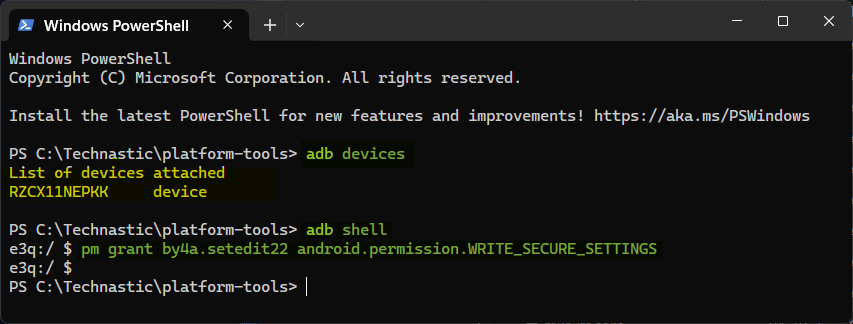Many Android users prefer a clean, minimalist lock screen without unnecessary icons, including the fingerprint scanner indicator. This might not sound practical because the fingerprint scanner icon provides a quick way to unlock Android phones. However, if you find it distracting, want extra privacy, or prefer a cleaner look, this quick guide will help you hide or remove the fingerprint icon from your Android phone’s AOD or lock screen.
Since Android is an open-source platform, it can be customized in more ways than you can imagine. With the help of Shizuku apps and SetEdit SettingsDatabaseEditor, you can tweak device settings and toggle hidden features without root. However, to enjoy the customization features offered by such apps, you need to grant them ADB-level permissions to override system settings.
SetEdit is a versatile app for modifying various system tweaks you wouldn’t find in Android’s regular settings menu. Since it lets you edit sensitive settings, you must be careful while tinkering with all available options. You are strongly advised to back up data before making system changes via this app.
The easiest way to remove the fingerprint scanner icon from the lock screen and AOD is to turn off the fingerprint lock. This tutorial will help you remove the fingerprint icon from the AOD, the lock screen, or both without disabling the feature.
Removing the Fingerprint Icon from Lock Screen & AOD
While the system tweak described below should work on all Android phones and tablets, I have tested it on my Samsung Galaxy S24 Ultra and OnePlus 13 with expected results. Whether you want a cleaner lock screen and AOD or just want to try it for fun, do the following.
- Open the Google Play Store and install the SetEdit app, which allows users to edit the settings database on Android devices.
- Download the latest Android SDK Platform Tools on your computer and unzip the downloaded file. Alternatively, you can use aShell or WebADB to run ADB commands on Android devices natively.
- Navigate to Settings > About phone > Software Information and tap the Build Number 7 times to enable Developer Options. Then open the Developer Options from the Settings menu and tap the toggle next to USB Debugging.
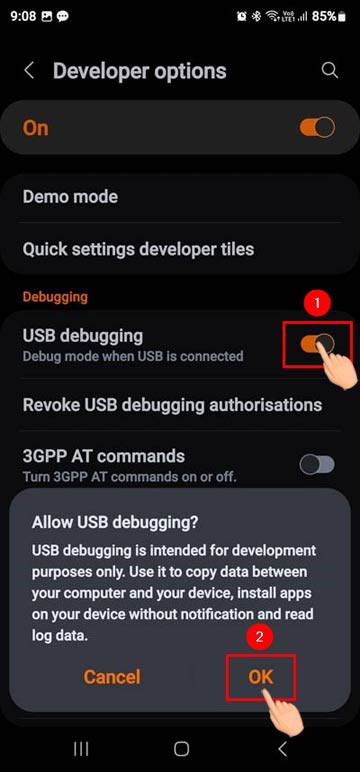
- Connect your Android device to your computer and ensure the screen remains unlocked while you execute the commands.
- Now, open the ‘platform-tools‘ folder and launch a command window.

- Type the following command in the command and hit Enter.
adb shell
- Now, type or paste the command below next to the ‘$’ sign and press Enter to execute it.
pm grant by4a.setedit22 android.permission.WRITE_SECURE_SETTINGS
- Once executed, the command will grant the SetEdit app permission to modify system settings.
- Disconnect the phone and launch SetEdit.
- Tap System Table and select Secure Table from the drop-down menu.
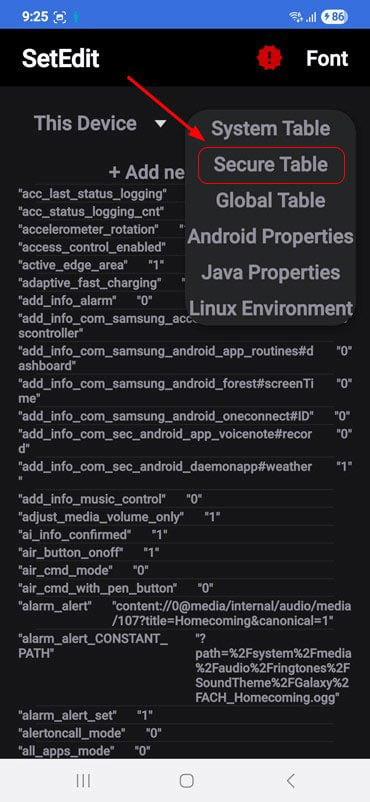
- Now, scroll down to the secure settings entries starting with ‘F’ and look for the entry called “fingerprint_screen_off_icon_aod” and tap it.
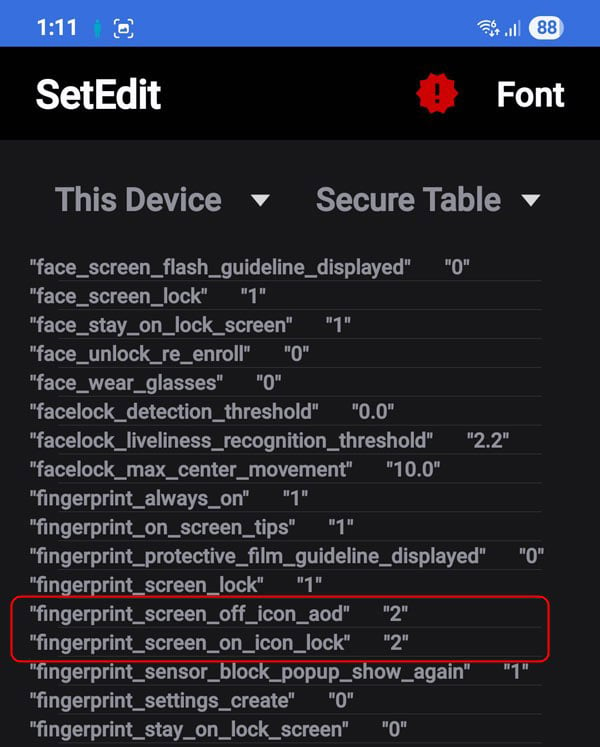
- Tap the Edit Value option and change the value to ‘0‘, which is ‘2‘ by default.
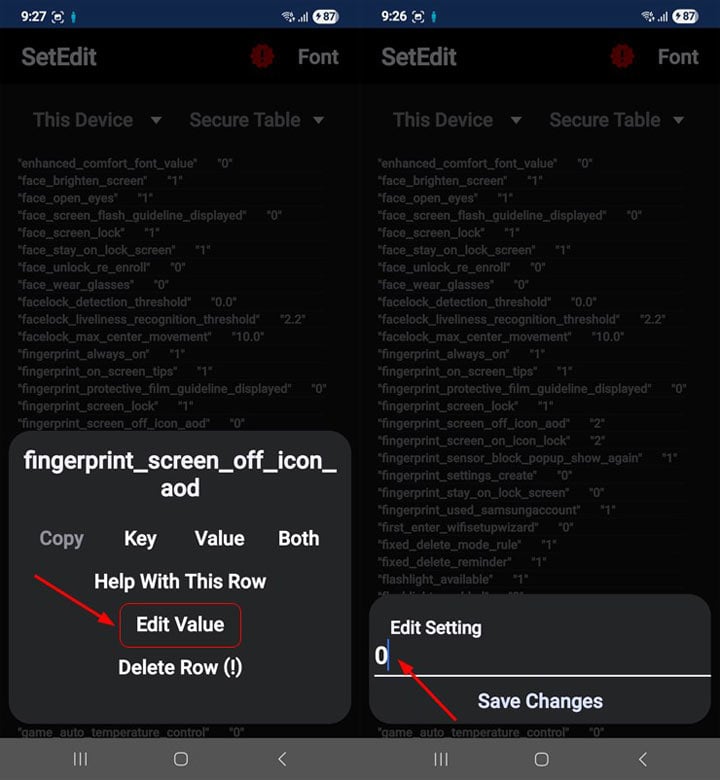
- Tap Save Changes to remove the fingerprint scanner icon from the AOD screen.
- If you want to remove the fingerprint icon from the lock screen as well, tap “fingerprint_screen_off_icon_lock” and change its value to ‘0‘.
You have successfully removed the fingerprint icon from the lock screen of your Android device. To undo the changes anytime later, follow the same steps and change the value back to ‘2‘.

